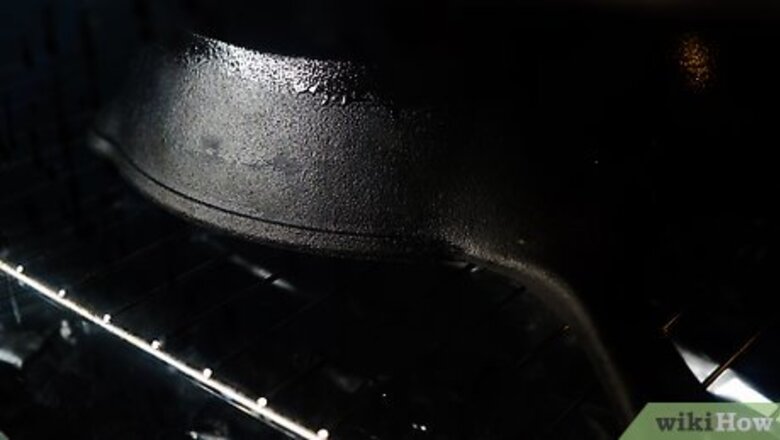
views
Crusty Cast Iron Cookware
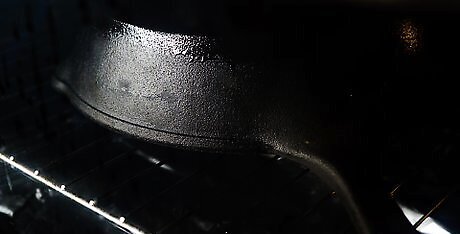
Place the cookware in a self-cleaning oven. Run one cycle. Alternatively, place in a campfire or directly on a hot charcoal fire for 1/2 hour, and heat until it turns a dull red. The crust will be flaking, falling and turning to white ash. After allowing the cookware to cool a bit (to avoid cracking the cast iron), use the following steps. If you have more rust than crust, try using steel wool to sand it off.

Wash the cast iron cookware with warm water and soap. Scrub using a scouring pad. If you have purchased your cast iron cookware as new, then it will be coated in wax or an oily coating to prevent rust. This will need to be removed before seasoning so this step is essential. Soak in hot, soapy water for five minutes, then wash off the soap and air dry.
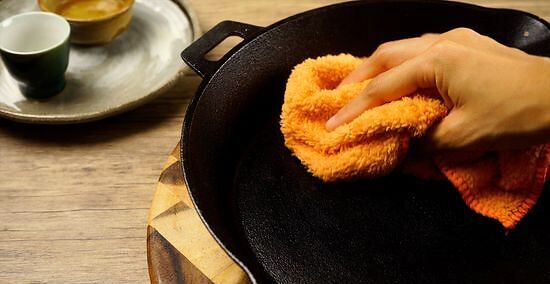
Dry the cookware thoroughly. It helps to put the pan in the oven at 350F for a few minutes to make sure it's really dry. Oil needs to be able to soak into the metal for a good seasoning and––oil and water don't mix.
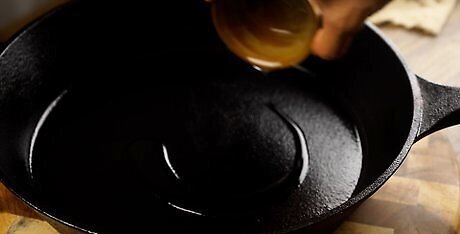
Coat the pot or pan inside and out with lard, Crisco (cooking fat), bacon fat, or corn oil. Over time, oils will make your pan sticky. Bacon fat is the best choice. Ensure that both sides of the lid are also coated.

Place both the lid and the pot or pan upside down in the oven at a high temperature (300ºF to 500ºF/150ºC-260ºC, depending on your preference). Heat for at least an hour to bake on a "seasoning" cover that will continue to protect the pan from rust and provide a stick-resistant surface. Place a sheet of aluminum foil or a large disposable foil roaster under the pan, on a lower rack or on the bottom of the oven, to catch drippings. Let cool to room temperature in the oven.
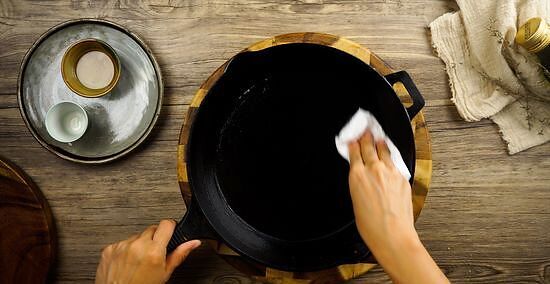
Repeat. For best results, repeat steps three and four and five.

Maintain the cast iron with ongoing care. Every time you wash your cast iron cookware, season it without fail. Place the cast iron cookware on the stove and pour in about a 3/4 teaspoon of corn oil (or other cooking fat). Wad up a paper towel and spread the oil across the cooking surface, any bare iron surfaces, and the bottom of the cookware. Turn on the burner and heat until smoke starts to appear. If using an electric stove, heat slowly as hot spots can crack the cast iron. Cover the cookware and turn heat off. Leave until cooled before placing in storage. Wipe off any excess fat before storing. If your cast iron gets sticky from using oil instead of bacon fat, use it over a campfire to make some bacon or other item which renders pig fat, and the stickiness will burn off.
Second Cleaning and Seasoning Method
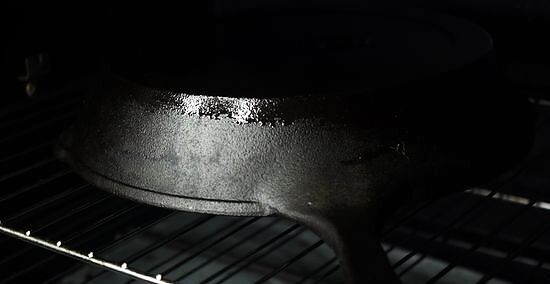
Use the self cleaning oven to strip down the cast iron cookware. Place the utensil in your self cleaning oven on the shortest cleaning cycle (usually 3 hours on most models). It will come out looking like the day it came out of the mold. Allow it to cool overnight. Wash the residue off with water only in the sink, using a stiff abrasive pad. Dry the cast iron utensil off with a paper towel, and immediately place the cookware back in the oven at 350ºF/180ºC for 10 minutes or so.
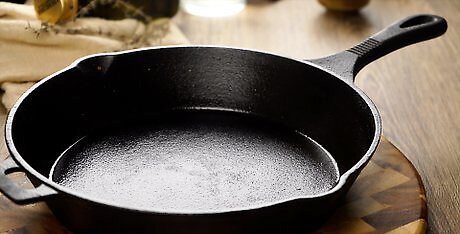
Take the utensil out of the oven after the 10 minute drying time is complete. Lightly brush the utensil with a paper towel coated with Crisco (or other solid cooking oil). Liquid vegetable oil will do in a pinch, but it's better to save the liquids until after the initial seasoning. It is important in this step only to lightly coat the cast iron with a thin coating of oil, just enough until it barely glistens. Do not allow any puddles or pools of liquid as this will cause problems at a later time.
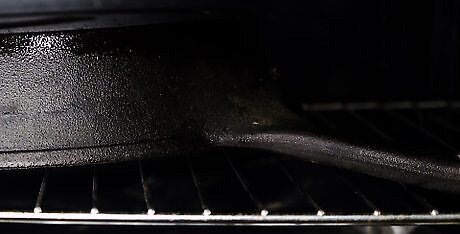
Place the cast iron cookware in the oven. Set to 500ºF to 550ºF/260ºC to 290ºC degrees. Have the cooking side of the cookware facing the bottom of the oven. This allows for any excess oil to drain off to the sides, and prevents pooling during the seasoning process. The higher heating temperatures allow for the oil to truly "cook" as opposed to just "gumming up" at lower temperatures. Cook undisturbed for 1 hour. Note: During this step, it will be best to turn off any smoke alarms in the immediate area as the cookware may smoke quite a lot. Ceiling fans also aid in ventilation.
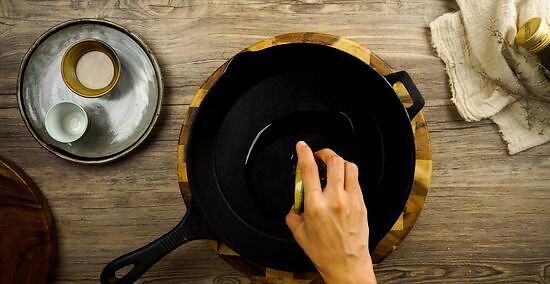
Finally, after the cast iron cookware is finished seasoning for 1 hour or so, take it out of the oven. Immediately wipe it down with another extra-light coating of Crisco. Allow it to completely cool before storing.



















Comments
0 comment